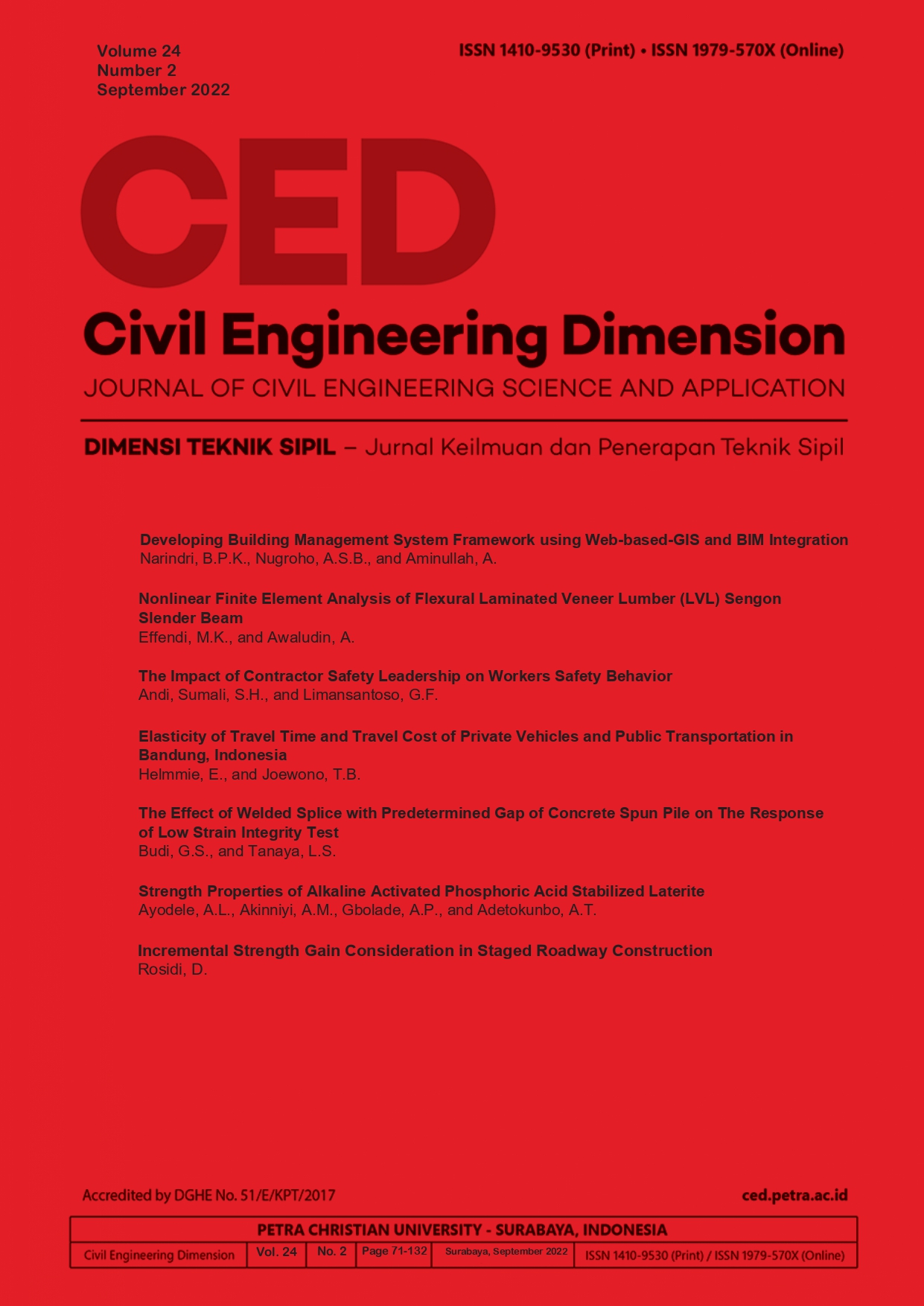Incremental Strength Gain Considerations in Staged Roadway Construction
DOI:
https://doi.org/10.9744/ced.24.2.125-132Keywords:
soft ground, consolidation, incremental strength gains, staged construction, wick drains, lateral squeeze, down dragAbstract
This paper presents an alternative construction method of a highway along coastal area underlain by thick normally consolidated very soft organic clay. Due to its remote location, mitigations to strengthen the soft clay are deemed too costly and/or require significant time to mobilize. Without mitigations, the presence of this very soft clay necessitates the roadway embankment to be constructed in phases to allow partial consolidation of clayey soils to take place before additional embankment fill can be placed. At each construction phase, the additional fill thickness and staging time are determined, and the corresponding degrees of consolidation and incremental strength gains are calculated at discrete grid points within the soft organic clay. The stability of the partially built embankment is then evaluated, and the fill thickness and staging time are adjusted to meet the stability safety requirements. The settlement due to fill placement can be estimated at each construction phase and included as an overbuilt to the next fill placement thickness. Impacts of soil horizontal and vertical movements due to filling to pile foundations are also be discussed.
References
Rocscience Inc., 2017. Settle 3D, Version 4.012.
Rocscience Inc., 2017. Slide, Version 7.028.
Federal Highway Administration (FHWA), 2006. Design and Construction of Drive Pile Foundations. NHI‐05‐042. April.
Ensoft Inc., 2016. LPILE, Version 2016.9.05.
Downloads
Published
How to Cite
Issue
Section
License
Copyright (c) 2022 Dr. Dario Rosidi

This work is licensed under a Creative Commons Attribution 4.0 International License.
Authors who publish with this journal agree to the following terms:- Authors retain the copyright and publishing right, and grant the journal right of first publication with the work simultaneously licensed under a Creative Commons Attribution License that allows others to share the work with an acknowledgement of the work's authorship and initial publication in this journal.
- Authors are able to enter into separate, additional contractual arrangements for the non-exclusive distribution of the journal's published version of the work (e.g., post it to an institutional repository or publish it in a book), with an acknowledgement of its initial publication in this journal.
- Authors are permitted and encouraged to post their work online (e.g., in institutional repositories or on their website) followingthe publication of the article, as it can lead to productive exchanges, as well as earlier and greater citation of published work (See The Effect of Open Access).











